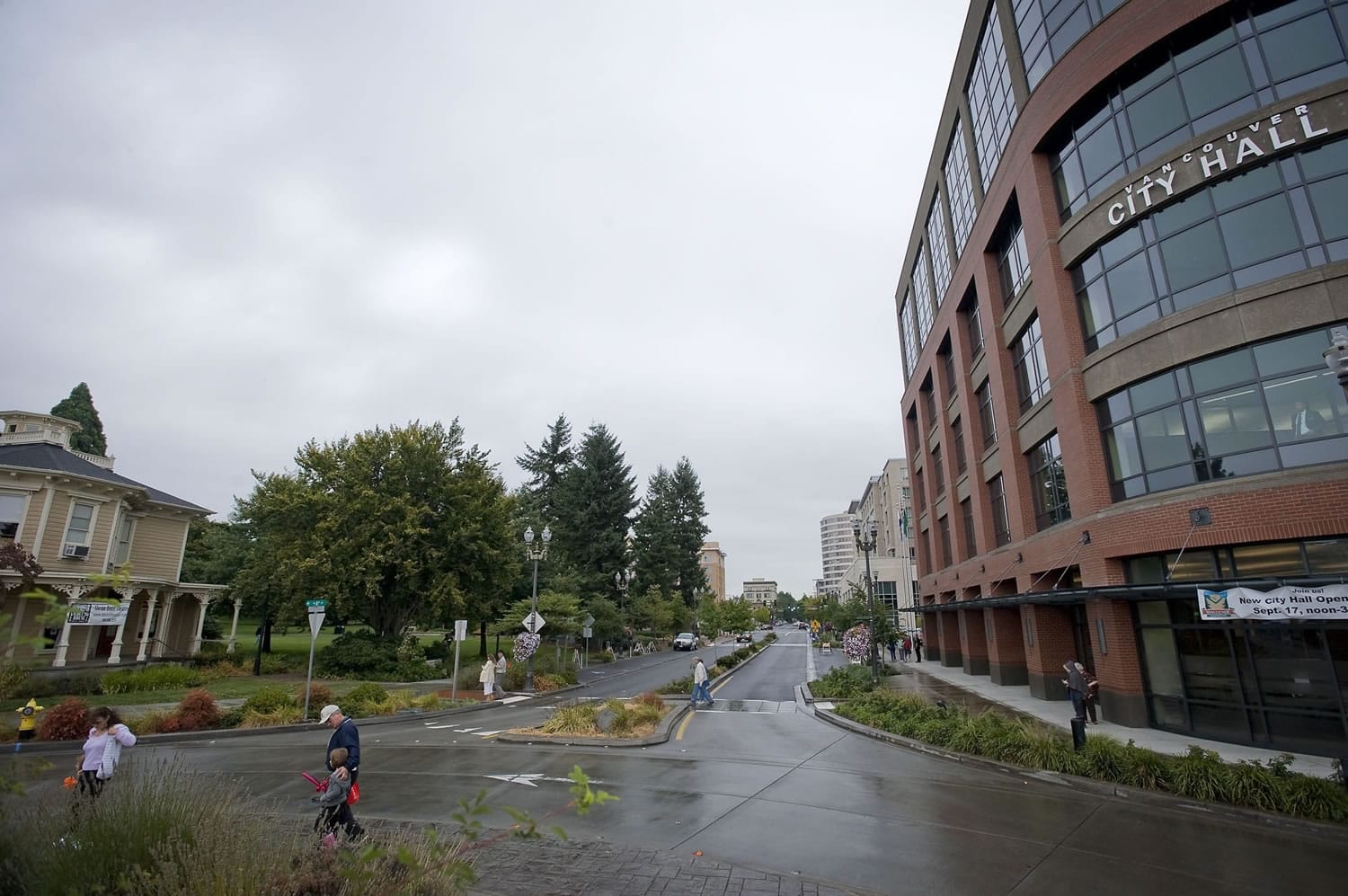With Vancouver’s City Hall back downtown, it’s all as Esther Short planned.
The famous namesake of the state’s oldest city park actually intended for the area to be a town plaza, with a post office, city hall and other important buildings centered around the green space, said Pat Jollota, local historian and former city council member.
“When she died, she left that piece of property there to be a town plaza,” Jollota said. “Not a park, but a plaza.”
It’s been a shade less than 50 years since City Hall was in the downtown core, and with the rest of the revitalization around the park, Jollota said the area’s now more like a plaza than it’s ever been.
“I call this her vision, because of the word ‘plaza’ that she used,” she said. “In 1860, it had a very definite meaning. I think she would have liked the post office there, too, but, oh well, it didn’t happen.”
Neighborhood leaders also are heralding the move to a six-story, LEED gold-certified building at 415 W. Sixth St. as a way to bring even more feet to downtown streets.
“It’s kind of a full circle type thing, (Esther Short Park) started as the center of everything, and now, it’s coming back to be the center of everything again,” Esther Short Neighborhood Association President Paula Person said.
How it came to be
But that the plaza in Vancouver’s center ever came to be is a tale that involves land disputes, a shooting, a drowning and sibling battles over a will.
Esther Short and her husband, Amos, moved west from Pennsylvania, always trying to get a break, Jollota said. That’s where Esther got her taste for town squares, which were common ways for cities to be shaped out east.
After many stops from the Atlantic to the Pacific, they landed in Vancouver on Christmas Day, 1845.
The couple “claim jumped” a parcel of land owned by Henry Williamson, which included what now includes the park and a good part of the Port of Vancouver. The Hudson’s Bay Company did its best to evict the family, even setting Esther and their 10 children adrift on the Columbia River in a boat.
“If you’ve got 22 hands paddling, you get to shore pretty quick,” Jollota joked.
Amos also shot and killed Williamson’s representative, David Gardner, in a dispute over the land. He was later acquitted.
Amos Short then became a probate judge and declared his own claim on Williamson’s land to be legally his. But not long after that, Amos drowned at the mouth of the Columbia when his boat sank as he traveled to San Francisco to sell local produce.
“Esther now comes into her own — before that she’s just Mrs. Short,” Jollota said.
But despite Amos’ ruling on his land, he never filed his decision in Oregon, she said. So Esther found she had to battle to keep the land. Ultimately, she hung onto it, and a series of good business moves — such as allowing the ferry crossing to land at the foot of what’s now Washington Street, where she put up a hotel and restaurant — she was now a woman of means.
In 1855, she donated what is now Esther Short Park and a long strip of waterfront for the city’s use forever. Vancouver was incorporated two years later, on Jan. 23, 1857.
A photo from that time shows Esther posing in a somewhat awkward position, Jollota noted.
“I realized she was sitting in a way to show off a ring with a rock that would choke a small dog,” she said, laughing. “She promised to buy Amos a nice (head) stone, but he was lost at sea, so that’s it!”
After Esther died, she left all her wealth to just one of her 10 kids, Hannah, who was wheelchair bound. Her excluded children fought the will in court, and eventually won. One son, Jesse, even tried to put the park up for sale, but had no takers, Jollota said.
Since then, City Hall had been at the south side of Eighth Street, just east of the park, until it moved to its prior location at 210 W. 13th St., by early 1967.
The city, which had long been eyeing a move, bought its new City Hall for $18.5 million from Bank of America. The building had been largely vacant since late 2008, after The Columbian staff moved out as part of a bankruptcy filing by the building’s owners, Downtown Vitality Partners, which includes Columbian Publisher Scott Campbell.
The move is expected to save about $1 million a year in leasing fees the city was paying for five buildings spread across 10 miles.
Person, the neighborhood association president, said the return of 260 city workers to downtown will do nothing but good.
She said she was happy to see the empty building filled and is happy about the added convenience of having most services — permitting, parking tickets, bill paying — all in one place.
She added she expects to see city employees going to lunch, walking around and visiting shops.
“People will stay downtown after work. There’s lots of plays and movies and events going on that will keep them downtown,” she said. “This kind of completes the circle.”



